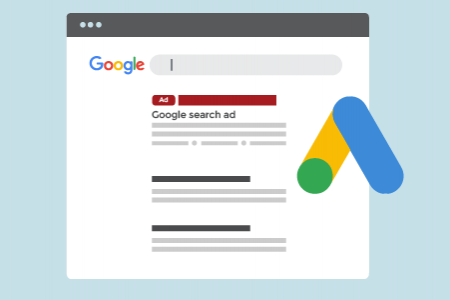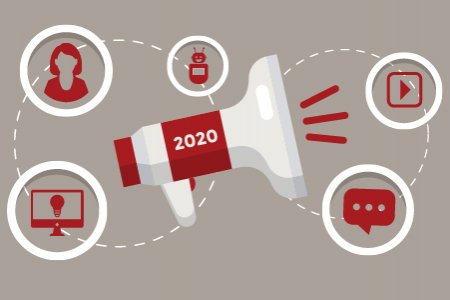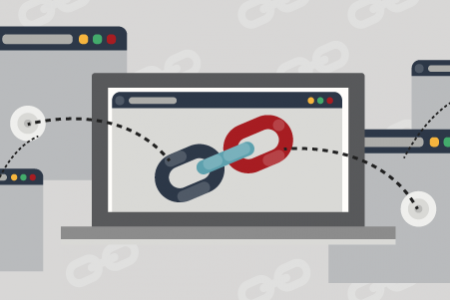We aim to respond to all messages within 1 business day. You'll be hearing from us soon!
In the meantime, perhaps you'd like to learn more...
Understanding, Analysing and Improving Bounce Rate
When it comes to measuring and monitoring your website’s performance using Google Analytics, 'Bounce Rate' is one of the most important metrics that web marketers use to determine the effectiveness of a website. In this post I'll take a look at what bounce rate is, why it is important, and what you can do to improve it.
What is bounce rate?
Google define bounce rate as "the percentage of single-page visits in which the person left your website from the entrance (landing) page." Essentially, bounce rate is a measure of whether people are viewing other pages on your website beyond the first page they originally arrived at. Google Analytics presents bounce rate as a percentage. For example, if 100 people visited your website and 42 of those people left your website without visiting any other pages, then your Bounce Rate would be 42%.
If people come to your website and don't visit any other pages before leaving, there's a good chance that your website is not doing all it could be doing to hold their interest or make them want to learn more about your products or services. By reducing your website’s bounce rate you’ll also go a long way to converting more visitors into customers. Consider this; every page your visitor sees is more exposure for you per visitor, which means more opportunities for you to get them to sign up for your newsletter, submit an online enquiry form, or make a purchase from your website. As such, taking steps to reduce bounce rates is an important component of conversion rate optimisation.
What is a good bounce rate?
Before answering this question it's vital to understand that there is no 'one size fits all' benchmark for what constitutes a 'good' vs 'bad' Bounce Rate. It’s important to take into account the type of website (e.g. brochure site, e-Commerce site, portal, blog and so on), the size of the website, individual pages on a website (e.g. a campaign specific landing page), the source of traffic (e.g. direct traffic, referrals from other websites, organic search traffic, paid search traffic), and the target audience (i.e. B2C or B2B).
That said, a fair starting point for a bounce rate benchmark is somewhere around the 40% - 50% mark. If your bounce rate is below 50% then you're on the right side of the ledger, although there is definitely room for improvement. This means that more than half of your visitors are coming to your website, finding good content, and visiting other pages to find out even more. On the other hand if your bounce rate is higher than 50%, then more than half of the visitors to your website are leaving without visiting any other pages. In my experience, a Bounce Rate in the region of 30% - 35% can be considered very good.
Bounce rates for blogs
The nature of blogs means that people who read them will quite often only read the latest post or the post they have arrived at following a keyword search in a search engine before leaving your website. As such, a high bounce rate is to be expected with blogs (or blog sections of a website). For example, with blog content it is not unusual (nor should it be alarming) to see bounce rates around the 70% - 80% mark.
Analysing bounce rate
Don’t analyse your website’s bounce rate in aggregate. It's important to understand that different sections of your website and different sources of traffic will display different bounce rates. Therefore you should always segment your traffic in Google Analytics to identify which traffic sources or pages of your website are responsible for the highest bounce rates.
In order to get a more accurate understanding of your website’s bounce rate, consider the following:
- Are there particular keyword search phrases which have a higher bounce rate than others?
- Does it vary according to the source of traffic source (e.g. organic search traffic vs referral traffic vs social media traffic)?
- How does bounce rate compare for New vs Returning visitors?
- Which individual pages or types of content on your website have higher or lower bounce rates?
Understanding this information is crucial to improving your website’s bounce rate, and more importantly, your website’s conversion rate.
Is a high bounce rate always a bad sign?
Although a high bounce rate can be an indicator of a website’s poor health, it doesn’t always hold true that a website with a high bounce rate is a poor website. Take for example an information website where a visitor lands on a page contains all of the information they need in order to satisfy their goal. In this case there may be no valid reason for the visitor to view any other pages on the website, and while their visit will be recorded as a 'bounce', this does not reflect the fact that their visit was actually a successful one.
Then again, if you're in the business of running an e-commerce website your efforts to reduce bounce rates are much more important, particularly as your goal should be to get a high percentage of visitors to view other pages in your website (hopefully the shopping cart pages). In this instance any successful efforts to reduce bounce rate will often also have a positive impact on your bottom line.
What can you do to improve (reduce) bounce rates?
The first step to fixing a high bounce rate is to isolate the traffic sources or the pages on your website that are predominantly responsible for the high number of bounces. Once you've identified the main culprits, undertake an objective review and analysis of each landing page or top content page that displays a high bounce rate. If it's a particular traffic source that's largely responsible for your website’s high bounce rate, question yourself as to why that might be. For example, traffic from social media sites often has a higher bounce rate due to the way that visitors come across your website as part of their social interactions rather than as a direct result of their search for specific information.
When seeking improvements to your website's bounce rate, consider the following factors:
- Design factors
Presentation is extremely important. Website that have high bounce rates often contain poor design elements, have too many ads, or are too cluttered. Make sure you review (and where necessary address) these factors. - Website navigation structure
Make sure your navigation is simple and intuitive. Poor/complicated navigation is one of the leading causes of high bounce rates. Make it easy for visitors to find the content on your website. - Copywriting
Make sure you use proper copywriting formatting (i.e. headlines, sub headings, short paragraphs, and lots of bullets points). Copywriting should be 'benefit focused' and free of typos. - Page load time
Long page load times can cause visitors to bail out of your website, thus leading to higher bounce rate. For this reason make sure you’re using a good quality web hosting service. Google are now placing more emphasis on page speed and as such have developed a range of tools designed to help you make page speed improvements. Check out the following link for more information - http://pagespeed.googlelabs.com/ - Quality content
Providing good quality unique content and delivering fresh content on a regular basis goes a long way to building your website’s reputation and ensuring that visitors are more inclined to want to read more of your website. - Create related content and make it easily accessible
Provide links from each page to other related content on your website. With blogs in particular you should display links to related content next to or below each post. - Use a clear and consistent call to action
Having a clear, compelling and consistent call to action is a simple yet very effective way to get visitors to your website to want to take the next step toward finding out more about your product/service, thus lowering your bounce rate. Give people something to do, or encourage people to take action before they leave your website. - Use testimonials and icons from credible associations
Make sure your website contains positive testimonials from real customers, along with logos or icons from reputable associations to which you belong. Doing so helps add credibility and serves to reduce any anxieties a visitor might have about moving on to the next stage in your - Provide clear contact info
Make sure you have clear contact information available throughout your website. If possible provide both local and toll free phone numbers.
Conclusion
The reality is that not every visitor who arrives at your website is going to find precisely what they are looking for. Nevertheless, by making even small improvements to your website’s bounce rate you’re likely to see an improvement in the volume of conversions you receive. The key is to not get hung up on aiming for some magical bounce rate figure, but to instead focus on making improvements, however minor they may be.
And remember that while it's important to monitor bounce rate, it's even more important to understand which traffic and which content is bouncing. Only then can you really start to consider what changes should be made to reduce your bounce rate.
If you'd like to know more about analysing your bounce rate or the steps you can take to improving it, please drop us a line or get in touch.
Written by Mark Vassiliou
Mark is the Manager of Digital Marketing at Apex and has worked in the digital marketing industry since 2004. Prior to joining Apex he worked in a variety of traditional marketing roles in both the corporate and SME environment in NZ and abroad, but these days much prefers the tangible measurability and transparency of digital marketing.Related posts
AWESOME! LET'S GET STARTED
TELL US HOW WE CAN HELP
We aim to respond to all messages within 1 business day. You'll be hearing from us soon!
In the meantime, perhaps you'd like to learn more...






